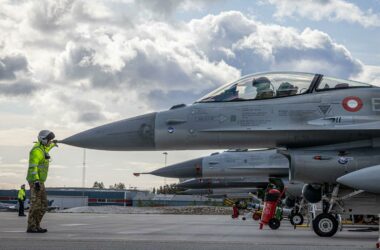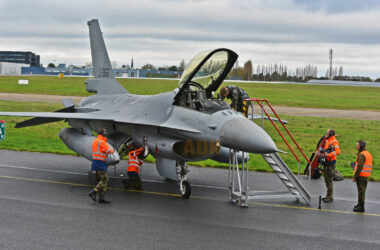On two different fronts, the US Air Force (USAF) is evaluating new equipment and techniques to improve the combat capabilities of its two newest bombers, the B-1B Lancer and the B-2 Spirit.
At Edwards AFB in California, the 412th Test Wing has equipped a Lancer with a modular pylon capable of being quickly adapted to carry different missiles.
Designed by Boeing and called LAM (Load Adaptable Modular Pylon), the equipment is installed in the belly of the aircraft in a position just behind the nose landing gear.
Follow Air Data News: WhatsApp | Google News | Instagram | LinkedIn | Twitter | Facebook

The plan is to use the modular pylon to launch hypersonic devices, considered decisive in deep strike missions such as those seen in the conflict between Russia and Ukraine.
The range of weapons is enormous, and up to 12 LAMs can be added to the B-1B, in addition to 24 other missiles carried in the internal compartment.
The great advantage offered by the pylon is that it can be quickly adapted to carry various weapons weighing up to 7,500 pounds.

Anti-ship attack
On the same day that it announced the LAM’s achievements, the USAF also confirmed that it had sunk a ship in the Gulf of Mexico by a B-2 stealth bomber.
The test was a demonstration of the “QUICKSINK” technique, which consists of a low-cost, quickly assembled kit that allows a combat aircraft to sink stationary or moving ships with great agility.

The Air Force tested the technique on the decommissioned ship M/V Monarch Countess, which has characteristics similar to civilian vessels that China could use to transport personnel and vehicles in an amphibious invasion of Taiwan.
“The development of this technology helps deliver technological superiority to ensure the United States can defend our interests, maintain freedom of action, and seize the initiative over large maritime areas,” said Col. Matthew Caspers, Air Force Research Laboratory, Munitions Directorate director.
According to the Air Force, QUICKSINK can be quickly deployed anywhere in the world and means less exposure to a response than a submarine firing a torpedo.






